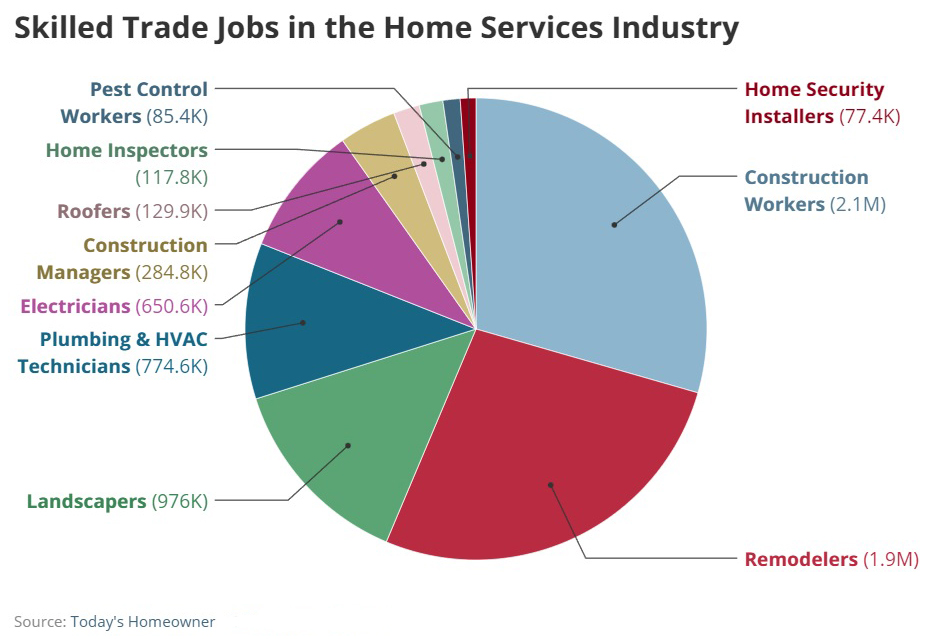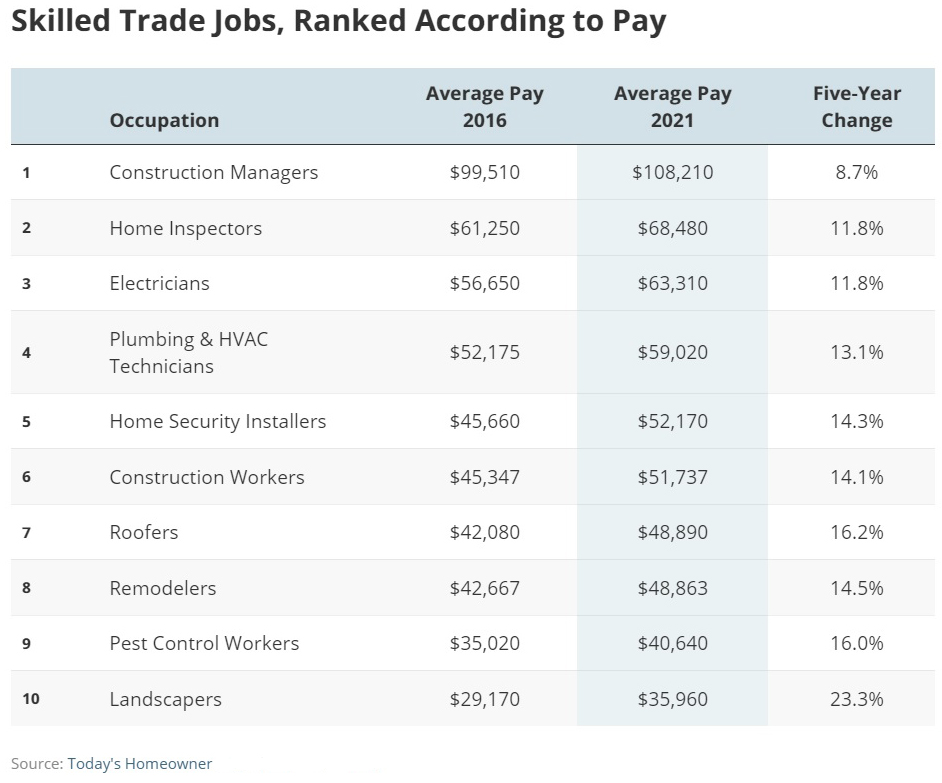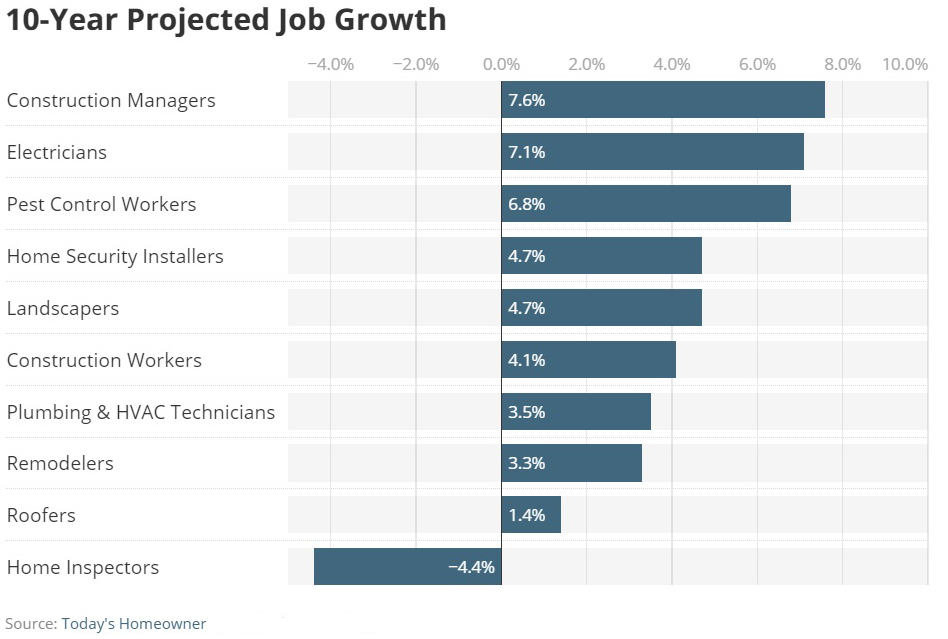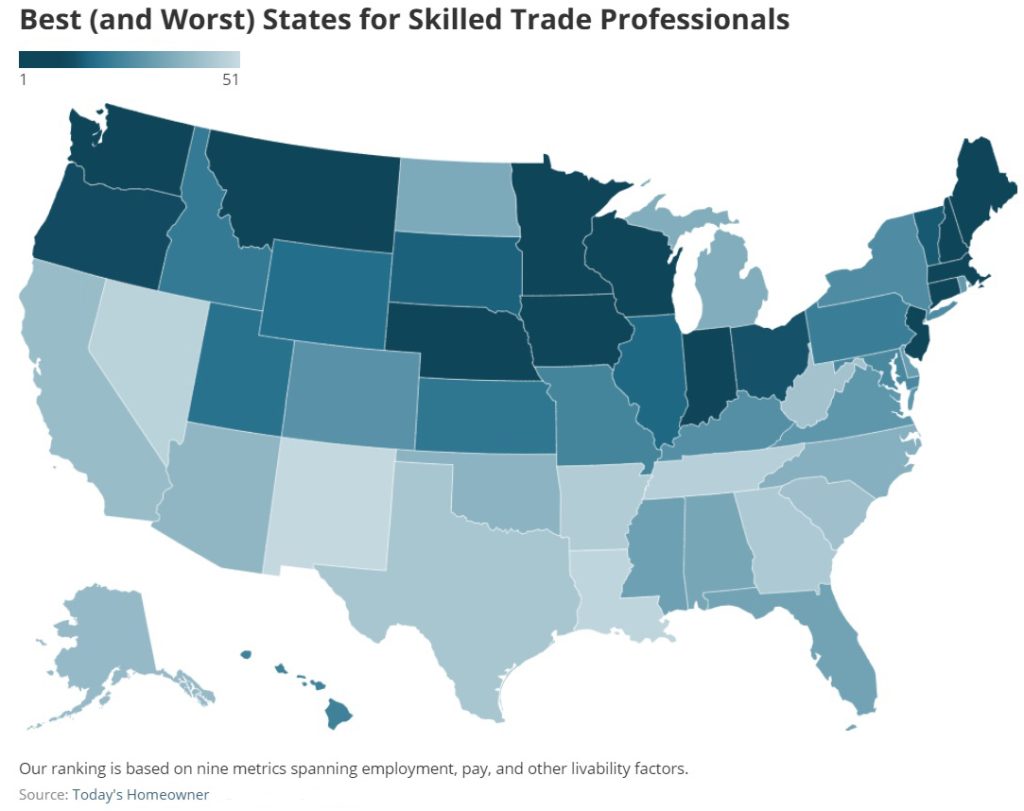Construction Pay Landscape
The skilled labor shortage continues to be an ongoing challenge at most construction companies—something many are actively trying to solve. In fact, the National Assn. for Business Economics has found roughly 57% reported skilled labor shortages at the beginning of last year. Like many organizations, it is looking to provide resources to help.
To help better identify the construction job landscape—and the opportunities that exist for skilled trades—Today’s Homeowner takes a look at the average pay for 10 jobs, their expected growth, and the places that are hot spots for skilled trade opportunities.

As I have been saying for years, the skilled trades offer young workers well-paying jobs and benefits. In fact, this study finds four of the study’s 10 skilled trade jobs have average earnings that exceed the national average ($58,260).
In today’s blog I want to dig into the numbers just a little more by looking at the highest earner in the report here: construction manager. This individual earns on average $108,210, which is roughly $40,000 higher than any other job in this particular study. Clocking in next are home inspectors and electricians, earning $68,480 and $63,310, respectively.
Both the occupations of construction managers and electricians are expected to grow by more than 7% throughout the next decade, which just happens to be more than the expected growth among all occupations (5.3%).

There are certainly other skilled trades that also have rapidly ascending earnings. For example, landscapers are rising quickly, increasing by more than 23% during the past five years. Two other jobs saw average pay increases of 16% or more over the five-year period: roofers and pest control workers.
Nine of the 10 skilled trade jobs in the home services industry are expected to grow in total employment throughout the next decade. As I always like to say, the opportunities are endless for skilled trades in the construction industry.

When looking at this from a geographical perspective many Northern states on both coasts and in the middle of the country rank well relative to more southern places.
How does the organization determine this? Each location for each job is ranked according to nine metrics including average pay, five-year change in average pay, five-year change in employment, job opportunities, ratio of average pay to average pay for all workers, housing costs as a percentage of average pay, violent crime rate, school quality rating, and unemployment rate. To rank the metros, the organization also indexed all metrics on a scale of 0 to 100, so the metro with the worst score received a 0 and the one with the best received a 100. And that is how it has determined where the greatest opportunities lie.

At the end of the day, this is simply one tool to help guide young workers to the right jobs. We will need a lot more in order to recruit and retain the right workers for each job. In the years ahead, we need to focus on the people. We need to fill in the labor gaps that currently exist in the construction industry. It requires mentorship. It requires a larger movement where all workers become excited about working again—and excited about construction specifically, which is an industry that solves the world’s biggest challenges by building the cities and infrastructure of tomorrow that keep our towns humming along.
If we get this worker component right, then we will be able to develop the right processes for our businesses and procure the technology that can drive real change in a new era of building. When we look at the people and the data component, a whole new world opens up. The future is looking brighter every day!
Want to tweet about this article? Use hashtags #construction #IoT #sustainability #AI #5G #cloud #edge #futureofwork #infrastructure
The post Construction Pay Landscape appeared first on Connected World.
from Connected World https://connectedworld.com/construction-pay-landscape/
via IFTTT
Comments
Post a Comment